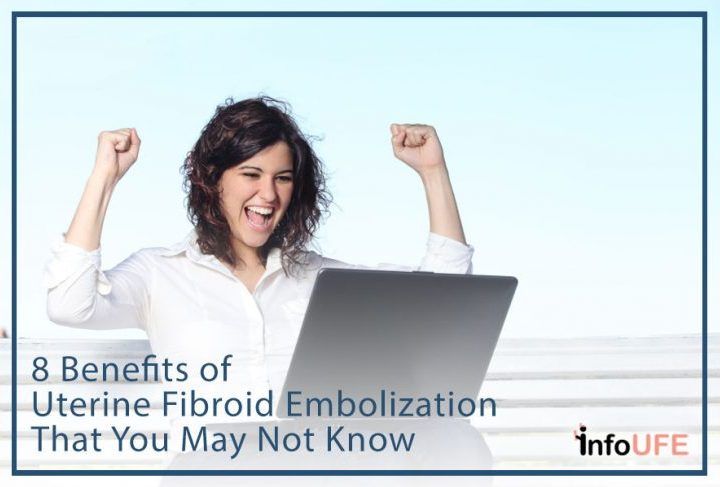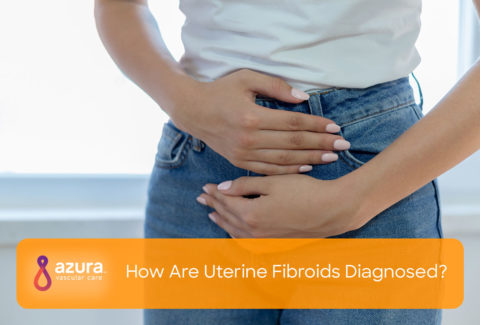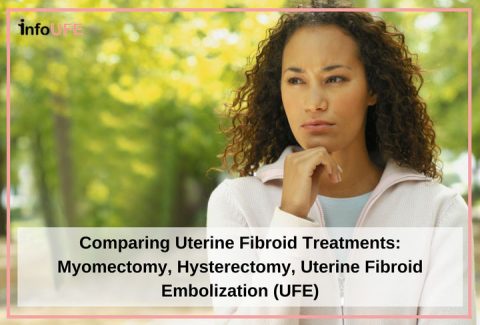
If you have uterine fibroids that are impacting the quality of your life, you may be considering uterine fibroid embolization (UFE) for the treatment of these non-cancerous tumors of the uterus. The UFE procedure is a minimally invasive alternative to surgery for treating uterine fibroids. The procedure is performed by an interventional radiologist and involves the placement of small beads inside the blood vessels that supply the fibroids. There are many benefits of uterine fibroid embolization, including improvement in both pain and bleeding.[i] There are even some benefits you may have not considered.
Top 8 Benefits of Uterine Fibroid Embolization
1. The Uterus is Spared – In the UFE procedure, all of the work is done within the blood vessels. Other surgical approaches are much more invasive. Hysterectomy involves removing the uterus along with the fibroids, and myomectomy requires cutting into the tissue of the uterus to remove the fibroids. Since UFE involves cutting off the blood supply and depriving the fibroids of nutrients, the uterus tissue remains intact, but the fibroids blood supply is cut off, causing them to shrink and die.
2. No Scar – UFE is a minimally invasive treatment, meaning the actual procedure is much less invasive than surgical techniques. Hysterectomy and myomectomy involve a scar, whether it is on your abdomen or inside your vagina. While these scars may be small, UFE typically doesn’t result in any scarring. Since only a small nick is made in the skin of your groin, or perhaps in your forearm, most women will heal completely.
3. Your Fibroids Will Shrink – After the UFE procedure, the fibroids will likely be smaller.[ii] Researchers have found that, as a result of the decrease in the size of the fibroids, the uterus may be about 30% smaller after UFE.[ii] Up to 93% of women report an improvement in size-related uterine fibroid symptoms 3 months after UFE.[iii]
4. Fibroid-Related Symptoms Improve – Most women, 86-90%, report improvement in bleeding after UFE. This improvement is still present in 90% of women after 2 years. Pain is improved as well, even up to16 months after the procedure.[iii]
5. Less Risk Than Surgery – Any medical procedure has at least some risk, but because UFE does not involve general anesthesia or being completely unconscious during the procedure, the risks of general anesthesia are not present. Also, compared to hysterectomy or myomectomy, there is less risk of major bleeding or pelvic infection after UFE.[i] Because there is less surgical risk, UFE can be performed as an outpatient procedure. This means many women can go home the same day as their procedure.
6. Quick Recovery Time – Most women are back to regular activities within 2 weeks of having UFE. Uterine fibroid embolization recovery is much quicker when compared to that of most surgical treatments. The recovery time for a hysterectomy is 6 weeks, and women who undergo myomectomy can expect their recovery time to be anywhere from 2-6 weeks.
7. Treat Multiple Fibroids at Once – UFE can treat all of your fibroids at the same time. During the procedure, the interventional radiologist can isolate the blood supply for all of the fibroids that need treatment. While hysterectomy is effective in removing all the fibroids, it also requires major surgery, and the uterus is removed. With myomectomy it is possible that not all of the fibroids may be removed.
8. Fibroid Expulsion – Occasionally, 5-10% of the time, a fibroid may come out of the uterus through the vagina.[i] This is more likely to happen with fibroids that are right at the surface of the uterus.[iv] While this can occur with pain and fever, it rarely requires surgery, and ultimately, the fibroid is out of the body.[iv]
Are you convinced that UFE might have the most benefits compared to other options for the treatment of your uterine fibroids? Whether or not UFE is an option depends upon your medical history and your goals. An interventional radiologist can help you decide if UFE is a potential treatment for your uterine fibroids.
Sources:
[i] Mara, M. and K. Kubinova, Embolization of uterine fibroids from the point of view of the gynecologist: pros and cons. Int J Womens Health, 2014. 6: p. 623-9.
[ii] Torre, A., et al., Uterine artery embolization for severe symptomatic fibroids: effects on fertility and symptoms. Hum Reprod, 2014. 29(3): p. 490-501.
[iii] Spies, J.B., Current evidence in uterine embolization for fibroids. Semin Intervent Radiol, 2013. 30(4): p. 340-346.
[iv] Tropeano, G., et al., Incidence and predictive factors for complications after uterine leiomyoma embolization. Hum Reprod, 2014. 29(9): p. 1918-24.


